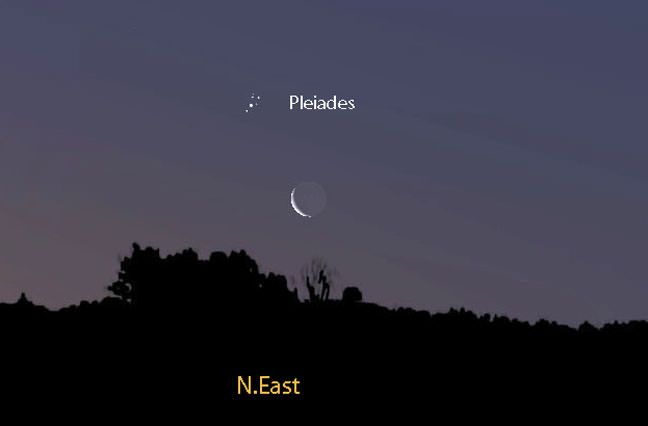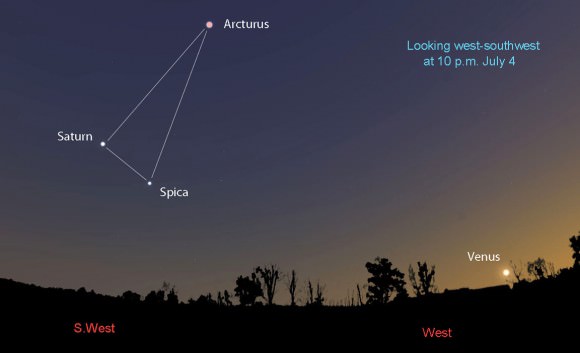

A thin lunar crescent rises beneath the Pleiades star cluster tomorrow morning at dawn. This map shows the sky facing northeast about 4 a.m. local time. Maps created with Stellarium
The sky can be a showy stage with big-time events like eclipses, meteor showers and the occasional bright comet, but most nights have a quiet beauty that whispers instead of shouts. The contrast between hype and hush is no more apparent than on the 4th of July – American independence day celebration – when we gather at a park or hilltop to watch the fireworks boom and flash across the heavens.
But there are other interesting things — some quiet fireworks — you can see in the sky to see while you are waiting for the holiday fireworks.
You can watch a less flashy but equally satisfying July 4th event as soon as tomorrow morning about the time the first bird lifts its voice at dawn. Look northeast to find a thin crescent moon dangling below the Seven Sisters star cluster. Also called the Pleiades, the cluster is a highlight of the winter evening sky. Though it seems out of place now at the height of summer, the Sisters remind us that nothing stands still. With the solstice behind us, winter’s already buckling his boots.


While you’re waiting for the show to begin tomorrow night, take a look around the twilight sky and see how many celestial luminaries you can spot. If you’ve got kids in tow, share the view with them, too.
The brightest natural object in the sky will be Venus, glimmering low above the western horizon. Much further up in the southwest, look for a tall, skinny triangle outlined by orangy Arcturus, highest of the three, along with Saturn and Spica.
Twist around to face east to find another triangle, this one named after the summer season. Halfway up is Vega, the 5th brightest star in the sky, shining white and bright as burning magnesium. Below it you’ll spot the other Summer Triangle members, Altair in Aquila the Eagle and Deneb in Cygnus the Swan better known as the Northern Cross.
These bright stars and two planets coalesced from gas and dust millions to billions of years ago. Much has happened beneath their gaze, from the first stirrings of humankind to the crackle and boom of fireworks on a starry evening.
Astronomers have been battling threats to their clear skies on all fronts lately. One of…
If you were Captain of the first USS Enterprise, where would you go!? Humanity is…
Now is the best time to observe Mars in 2025. Mars from 2014. Credit: Paul…
Scheduled for launch in 2027, the Nancy Grace Roman Telescope is slowly being readied for…
Few places in the solar system are better suited to a balloon than Titan. The…
We reported before about a NIAC-funded project known as the Lofted Environment and Atmospheric Venues…